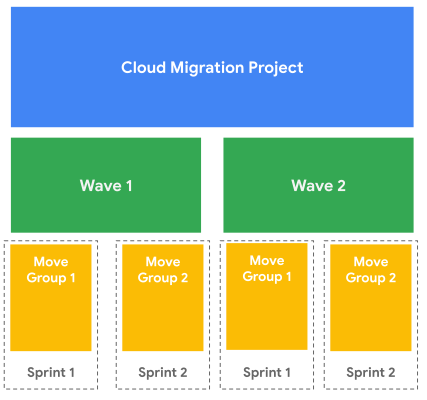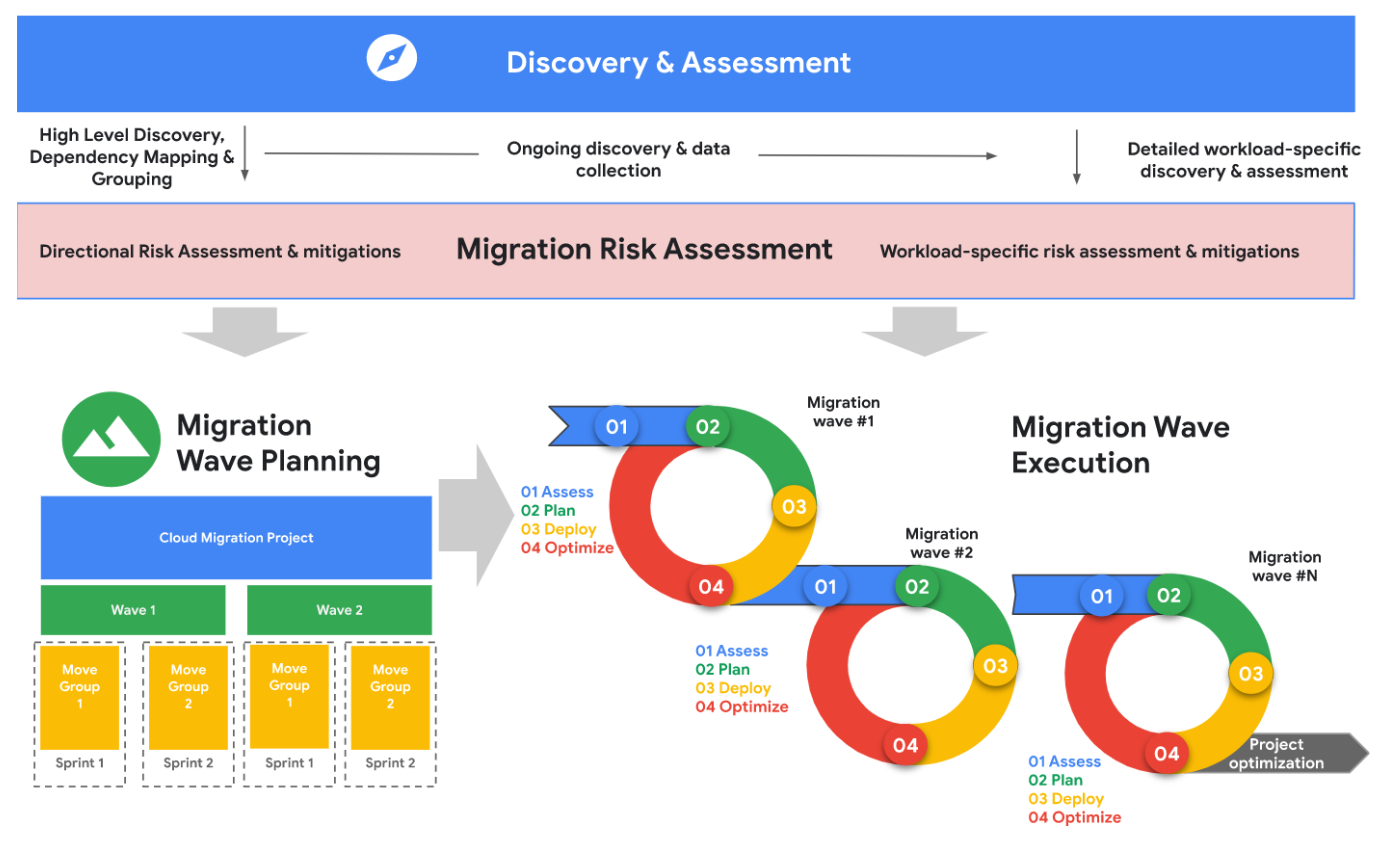完成发现和评估阶段并设置基础架构设计后,您可以开始规划迁移,方法是将工作负载划分为迁移波。
本页介绍了如何规划成功的迁移。
准备工作
在开始迁移规划之前,请完成工作负载发现和评估,并通过以下任务制定整体迁移策略:
- 创建要迁移的工作负载(例如应用、服务和数据库)目录。
- 将工作负载映射到基础架构组件。
- 映射依赖项。
- 确定高层次的迁移和现代化路径(重新托管、重新平台化、重构、重新架构、替换、弃用)。
然后,使用 Cloud Foundation Toolkit 在 Google Cloud上构建基础。
Cloud Foundation 工具包包含一些资源,可帮助您开始使用新云基础架构的以下方面:
- Identity and Access Management
- 资源管理
- 网络
- 数据管理
- 基础架构即代码
- 日志记录、监控和结算
- 安全基础
- GKE 基础知识
迁移概念
云迁移项目代表贵组织迁移应用到 Google Cloud的整个流程。
每个云迁移项目都分为多个波段。波浪是指具有共同特征或相互依赖关系的一组应用,由工作负载发现和评估功能确定。由于外部依赖项较少,独立应用和数据库通常是第一波迁移的理想候选对象。另一方面,具有许多依赖项的应用会构成复杂的迁移波,需要额外的规划。
迁移波次中的应用会被划分为迁移组,并在Sprint 中迁移到 Google Cloud 。迁移组是指您需要一起迁移的一组基础架构资源和工作负载。这些资源和工作负载可以是同一应用的一部分,也可以是相互依赖的一组应用。

业务能力是确定迁移群组最重要的方面之一。例如,零售业的供应链管理和库存管理、银行业的欺诈监控、保险业的理赔处理,都代表了各个领域的业务能力领域。考虑业务能力至关重要,因为这有助于确保在迁移期间和迁移后业务服务的性能和可用性不会受到任何中断或中断程度最小。
在业务能力领域内,您需要根据不同的环境执行迁移。研究和开发 (R&D) 环境通常是首先迁移的环境。这有助于您发现并减少可能阻止或减慢迁移的任何障碍。然后,您可以按照最佳实践和缓解措施,逐步迁移研发环境、预生产环境和生产环境。
您需要将发现和评估作为一项持续性流程来运行,随着时间的推移,数据收集会越来越精细、准确。这样,您就可以不断提高特定于工作负载的数据的准确性,从而帮助您找出与云迁移相关的特定于工作负载的风险。
通过第一波发现和评估,您可以创建基础架构组件和工作负载之间依赖关系的概要图。这有助于您在第一波迁移期间规划和优化目标架构的各个元素,例如虚拟机类型、存储类别、着陆区设计、基于计算和 I/O 吞吐量要求的高级容量大小。 Google Cloud
您还需要在发现和评估的同时运行迁移风险评估。目的是识别和衡量与迁移相关的工作负载专用风险,并启动适当的缓解措施。
下图简要展示了整个迁移过程。


